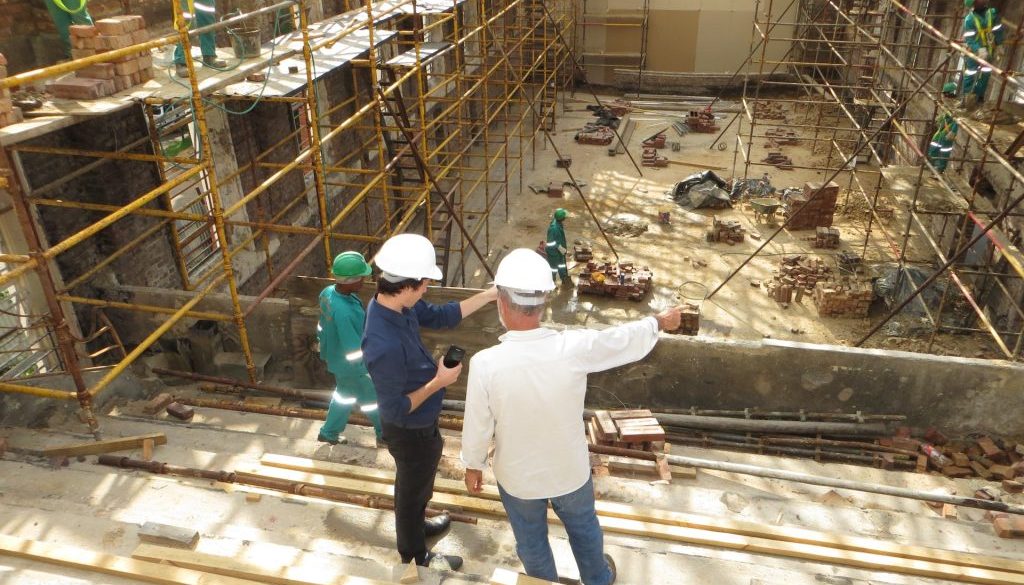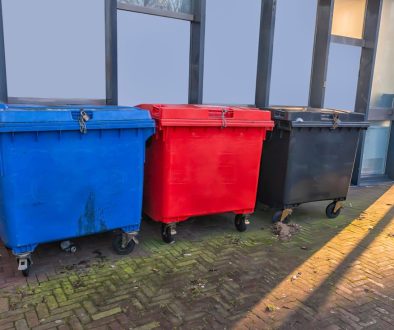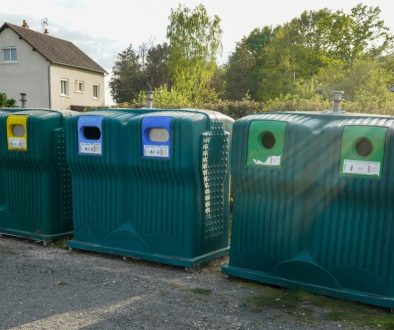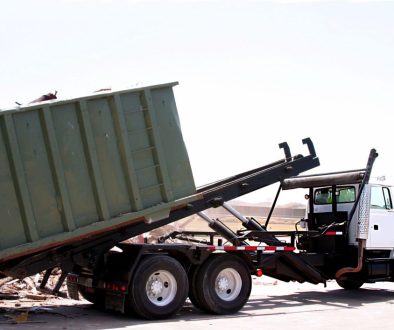Proper waste management is an essential aspect of any successful project. Whether you’re renovating your home, clearing out your garden, or overseeing a commercial construction site, hiring a skip is often the most efficient method of managing and disposing of waste. One crucial aspect of hiring a skip is selecting the right size, which can significantly impact your project’s efficiency and cost-effectiveness.
Working with a reputable skip hire and aggregate company such as Enviro Skip Hire, servicing Staffordshire, ensures that you have access to a wide range of skip sizes and expert guidance to help you choose the perfect one for your needs.
Selecting the right skip size may seem like a simple task, but it requires careful consideration of several factors, including the volume of waste generated, the nature of the waste materials, accessibility to the site, and any council permits or restrictions.
An accurately sized skip enables you to handle waste management efficiently, minimise environmental impact, and avoid additional costs associated with overloading or making multiple skip hires.
This comprehensive guide will walk you through the process of choosing the ideal skip size for various projects, such as home renovations, garden clearances, and commercial construction work.
Moreover, we will delve into factors to consider when selecting a skip size, provide an overview of different sizes and their capacity, and discuss the importance of partnering with a professional, reliable skip hire service like Enviro Skip Hire to ensure a smooth and efficient waste management process.
Armed with this knowledge, you’ll be better equipped to choose the perfect skip solution for your project. By combining expert guidance with an understanding of the different skip sizes available and their applications, you can ensure that your waste management process is both efficient and environmentally responsible.
Factors to Consider When Choosing a Skip Size
Before selecting the ideal skip size for your project, it’s essential to evaluate various factors that can help you make the best decision for your waste management needs. Here are some key considerations to keep in mind when deciding on a skip size:
- Volume of Waste: Accurately estimating the volume of waste generated by your project is crucial, as it directly influences the skip size you’ll require. Consider all waste materials, including rubble, soil, furniture, and garden waste, and try to anticipate anything that might be unexpectedly added to the waste pile.
- Type of Waste: The nature of the waste materials also plays a significant role in choosing a skip size. Some materials may be bulky, requiring a larger skip, while others might be compact, allowing for a smaller container. Additionally, if you’re disposing of heavy waste, ensure the chosen skip is designed to handle the weight without exceeding its load limit.
- Access and Space: The location of your project and the available space for skip placement are also important factors. If space is limited, you may need to opt for a smaller skip or consider using multiple smaller skips instead of one large container. Remember to factor in access for the skip delivery and collection vehicles as well.
- Duration of Project: The duration of your project can also impact your choice of skip size. For short-term projects or one-off clearances, a single appropriately-sized skip may suffice. In contrast, longer projects may require multiple skip hires or a larger skip to accommodate ongoing waste generation.
- Budget and Permits: Finally, take into account your budget and any council permits or restrictions that may apply to skip hire in your area. Larger skips may be more expensive to hire and could require additional permits, so weigh up the costs and logistical requirements against your project’s needs.
Overview of Skip Sizes and Their Capacities
Understanding the various skip sizes available and their capacity can help you make an informed decision about the most suitable option for your project. Here are the most common skip sizes, along with their approximate capacity and typical use cases:
- Mini Skips (2-3 Yards): With a capacity of around 25-35 bin bags, mini skips are ideal for small domestic projects, such as minor garden clearances or the removal of a single piece of bulky furniture. These skips can easily fit in smaller spaces and are an economical choice for minimal waste disposal needs.
- Midi Skips (4-5 Yards): Midi skips can hold approximately 45-55 bin bags and are well-suited to medium-sized domestic projects like kitchen and bathroom renovations, or moderate garden clearances. They offer increased capacity without taking up too much space, making them a popular choice for many homeowners and contractors.
- Builders Skips (6-8 Yards): One of the most commonly hired skip sizes, builders skips can accommodate around 65-85 bin bags and are suitable for a range of commercial and domestic projects, including property refurbishments, office clear-outs, and heavy waste disposal.
- Maxi Skips (10-16 Yards): Maxi skips have a larger capacity, holding approximately 100-160 bin bags. These skips are perfect for large-scale projects, such as house or office clearances, significant construction work, or substantial garden landscaping jobs. Keep in mind that the size and weight of these skips may require additional permits and access considerations.
- Roll-on Roll-off Skips (20-40 Yards): Roll-on roll-off skips are designed for the disposal of high volumes of waste from commercial or industrial projects. With a capacity ranging from 200-400 bin bags, these skips can accommodate significant amounts of bulky or heavy waste materials. Be prepared for additional planning, permits, and space requirements when using this type of skip.
The Role of Professional Skip Hire Services in Waste Management
When embarking on any project that generates waste, it’s vital to engage with a professional, reliable skip hire service like Enviro Skip Hire. By doing so, you can ensure that your waste management process is smooth, efficient, and environmentally responsible. Here are some key benefits of hiring a professional skip hire service:
- Expert Advice: A reputable skip hire service can provide expert guidance on choosing the right skip size for your project and estimating the volume of waste you’ll generate. They can also advise on the most suitable type of skip based on the nature of the waste materials you’ll be disposing of.
- Range of Skip Sizes: Trustworthy skip hire services typically offer a wide range of skip sizes to cater for diverse waste disposal needs. By partnering with a service that provides various skip options, you can be confident that you’ll find the perfect solution for your project.
- Waste Disposal Compliance: A professional skip hire service will ensure that your waste is disposed of in compliance with local regulations and environmental guidelines. This means you can have peace of mind knowing that your waste is being managed responsibly and that you’re not inadvertently contributing to environmental harm.
- Speed and Efficiency: By using a reputable skip hire service, you can expect speedy and efficient delivery and collection of your skip, avoiding delays and keeping your project on schedule.
- Environmental Responsibility: Professional skip hire services are often dedicated to reducing waste and promoting recycling wherever possible. By engaging with a responsible service provider, you can minimise the environmental impact of your project while promoting sustainability within the industry.
Tips for Maximising Skip Efficiency
Once you’ve chosen the appropriate skip size for your project, follow these tips to maximise skip efficiency and waste management:
- Break Down Bulky Items: Dismantle or break down large items, such as furniture or appliances, before placing them in the skip. This can help maximise available space and avoid overloading the container.
- Arrange Waste Strategically: When filling your skip, carefully arrange the waste materials to make the most of the available space. Place flat or heavy items at the bottom and use smaller debris to fill in gaps, creating a more densely packed container.
- Avoid Overfilling: Overloading your skip is against the law and can result in additional fees or the refusal of waste collection. Be mindful of the skip’s weight limit and ensure that waste does not exceed the top of the container.
- Plan for Permits: If you need to place your skip on a public road, be sure to obtain any necessary permits from the local council in advance. Most skip hire services can help with this process, ensuring that you remain compliant with any applicable regulations.
Final Thoughts
Selecting the right skip size for your project is a crucial element of effective waste management. By carefully considering factors such as waste volume, type, location, and project duration, you can make an informed decision about the most suitable skip size for your needs.
Remember to enlist the help of a professional skip hire service like Enviro Skip Hire to guide you through the selection process and provide a seamless waste management experience.
By following this comprehensive guide and being mindful of the tips shared, you can ensure that your waste management process is efficient, cost-effective, and environmentally responsible. With the correct skip size in place and the support of a reputable skip hire service, you have laid the foundation for a successful project and a greener future. Contact us today to hire a skip in Crewe!




